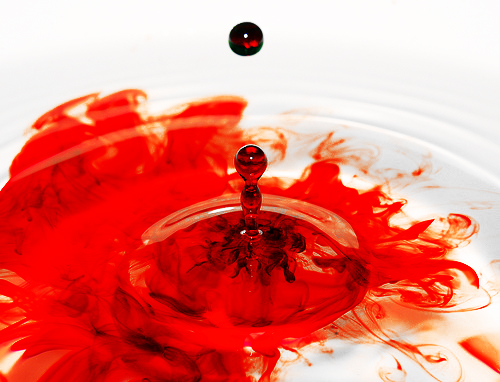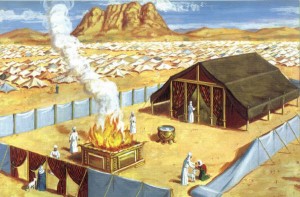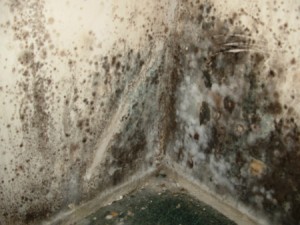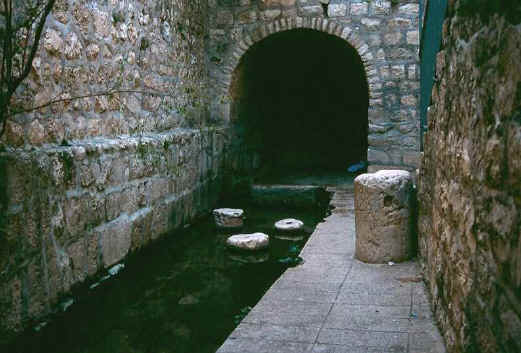מצורע
Parshat Metzorah
Wayyiqra (Leviticus) 14:1-15:33
And YaHuWaH spoke to Mushah, saying,“This shall be the Torah of the leper for the day of his cleansing: He shall be brought to the priest- Wayyiqra (Leviticus) 14:1-2
This Torah Portion deals with הַמְּצֹרָע HaMetzorah, which has often been translated “the lepor.” According to Torah the צָרָעַת Tsaraat, which has been called leprosy, can infect people. In garments the infection is most likely some sort of mold or mildew, the same would apply to the walls in a building. In people however the leprosy would show up in spots of dried up ashy flesh that would have white or yellow hair. Raw pieces of flesh would often manifest in these places. This disease is very much like leprosy but actually the infection itself can cover a broader area. As covered in the previous Torah Portion we know that this particular word Tsara is very specific and due to the fact that it is often used in judgment for slander or related sins it is seen as a very “spiritual” concept not just a physical one. The infection of Tsaraat rendered a man or woman tame’ or “unclean”. They could not live in the camp, but dwelt outside the camp, they covered their lips if one approached and they would cry out “tame, tame” or unclean, unclean.
Wayyiqra (Leviticus) 14:3 and the priest shall go out of the camp, and the priest shall look and see, if the leprosy is healed in the leper,4then the priest shall command, and he shall take for him who is to be cleansed two live and clean birds, and cedar wood, and scarlet, and hyssop.5 “And the priest shall command, and he shall kill one of the birds in an earthen vessel over running water.
While the bird is still alive, it along with, the piece of cedar, the scarlet thread and the bundle of hyssop are then dipped into the blood of the slaughtered bird and spring water in an earthen vessel. The blood and water is then sprinkled on the metzora seven times, and the live bird is set free in an open field. This is a picture of Messiah’s blood and water that poured forth from his dead body, yet he lives and rose to Shamayim, cleansing his people.
Wayyiqra (Leviticus) 14:8“And he who is to be cleansed shall wash his garments, and shall shave off all his hair and wash himself in water, and shall be clean. Then after that he comes into the camp, but shall stay outside his tent seven days.9 “And on the seventh day it shall be that he shaves all the hair off his head and his beard and his eyebrows, even all his hair he shaves off. And he shall wash his garments and wash his body in water, and shall be clean.
On the eighth day he brings two male sheep, one as theguilt offering and the other as an ascending offering-and a female sheep as a sin offering; with meal offerings” consisting of fine flour, olive oil and wine. Whomever cannot afford sheep replaces two birds for the sin and ascending offerings. In this we see yet another example of the eighth day and “new beginnings”.
Just as the Kohanim (Priests) were treated when Mushah was initiating them, so the Metzorah (Leper) is sprinkled with blood on the cleansed metzorah’s earlobe, and on the thumb of his right hand and the big toe of the right foot. Oil from the meal offering is positioned on these parts of his body and on his head. This is to be done after being sprinkled seven times in the direction of the Qodesh of Qodeshah (Most set apart places) in the Sanctuary, “the priest shall make atonement for him, and he shall be purified.” We see yet again purification comes through blood and oil. Mashyach (Messiah) means anointed one, so we see the picture of oil and we know through his blood brings redemption and purity.
We know that Yahuwshuwa cleansed many lepers:
MattithYAHUW (Matthew) 8:3And stretching out His hand Yahuwshuwa touched him, saying, “I desire it. Be cleansed!” And immediately his leprosy was cleansed.4 And Yahuwshuwa said to him, “See, mention it to no one. But go your way, show yourself to the priest, and offer the gift that Mushah commanded, as a witness to them.”
Tzaraat in the Home
Not only people can be afflicted with tzaraat. In Tazria, the previous Torah Portion, we read how garments, may be deemed “leprous.”
Wayyiqra (Leviticus) 14:33And YaHuWaH spoke to Mosheh and to Aharon, saying,34“When you come into the land of Kena’an, which I am giving you as a possession, and I put a plague of leprosy in a house in the land of your possession,35 then shall the one who owns the house come and inform the priest, saying, ‘It seems to me that there is some plague in the house.’36“And the priest shall command, and they shall empty the house, before the priest goes in to look at the plague, so that all that is in the house is not made unclean. And after that the priest goes in to look at the house.37“And he shall look at the plague and see, if the plague is on the walls of the house with sunken places, greenish or red- dish, which appear to be deep in the wall,38 then the priest shall go out of the house, to the door of the house, and shut up the house seven days.
On the seventh day, the Kohen again inspects the plague. If the infection has faded or disappeared, then that area is scraped clean and the house is pure. If it remains unchanged, he locks up the house for another week.
Wayyiqra (Leviticus) 14: 39 “And the priest shall come again on the seventh day and look and see, if the plague has spread on the walls of the house,40 then the priest shall command, and they shall remove the stones with the plague in them, and they shall throw them outside the city, into an unclean place,41while he lets the house be scraped inside, all around, and the dust that they scrape off they shall pour out in an unclean place outside the city.42“And they shall take other stones and put them in the place of those stones, and take other mortar and plaster the house.The removed stones are replaced with new stones, the house is re-plastered, and closed for a second seven-day period. And the end of these seven days,43“And if the plague comes back and breaks out in the house, after he has removed the stones, after he has scraped the house, and after it is plastered, 44 then the priest shall come and look and see, if the plague has spread in the house, it is an active leprosy in the house, it is unclean. 45 “And he shall break down the house, its stones, and its timber, and all the plaster of the house, and he shall bring them outside the city to an unclean place.46“And he who goes into the house, all the days while it is shut up, becomes un- clean until evening.47“And he who lies down in the house has to wash his garments, and he who eats in the house has to wash his garments.48 “However, if the priest indeed comes in and looks at it and sees that the plague has not spread in the house after the house was plastered, then the priest shall pronounce the house clean, because the plague is healed.
The “healed” house undergoes a purification process similar to that of the healed metzorah:
“…and [the Kohen] shall take the cedar wood, and the hyssop, and the scarlet, and the living bird, and dip them in the blood of the slaughtered bird, and in the spring water, and sprinkle the house seven times… and he shall let go the living bird out of the city into the open fields. And he shall make atonement for the house, and it shall be clean.”
The Zaw
The zaw is a man who has a white, non-seminal discharge from his reproductive organ. The zaw remains in impurity during the period of time that the discharge continues and for seven days after it has stopped. Anything he touches, sits and lies on, or anything that is touched by any of his bodily fluids, is rendered tameh, or unclean.
On the seventh evening he immerses in a mikwah (body of living water) and becomes pure. On the eighth day he brings two birds as offerings.
A seminal discharge renders the person tameh, or unclean until the next sunset and immersion in a mikwah must be done.
Niddah and Zabah
Wayyiqra (Leviticus) 15:19‘And when a woman has a discharge, and the discharge from her flesh is blood, she has to be in her separation for seven days. And whoever touches her is unclean until evening.
A woman on her menstrual cycle is a niddah; a woman who has a discharge of blood outside the time of her regular menstrual cycle is a zabah. Both are rendered ritually unclean: the niddah for seven days as long as the bleeding stops and the zabah until the end of seven “clean days” which she begins counting after her flow has ceased completely. On the eighth day she brings two pigeons or doves to the Tent of meeting. A man having relations with a niddah or zabah, is also rendered unclean. In future studies we will learn that a man who openly has relations with a woman on her flow will be cut off from the nation.
Wayyiqra (Leviticus) 15:31 ‘Thus you shall separate the children of Yashar’al (Yisrael) from their uncleanness, lest they die in their uncleanness when they defile My Dwelling Place which is in their midst.32‘This is the Torah for one who has a discharge, and for him who emits semen and is unclean thereby,33 and for her who is sick in her monthly separation, and for one who has a dis- charge, either man or woman, and for him who lies with an unclean woman.’ ”
In closing, humans bleed, reproduce, are susceptible to skin disorders, molds, mildews and plagues. It is just about guaranteed that a person at some point will become unclean or Tameh. Being unclean in of itself is not sinful in the ordinary since though a sin offering is to be made. A person who willingly chooses to live a life of uncleanliness however is another story. Let us rejoice that though we were unclean and lost to YaHuWaH, he has redeemed us through the blood of his lamb, Yahuwshuwa the Anointed One! Praise YaHuWaH that he sent his son to cleanse the lepers, physically, spiritually and emotionally.






